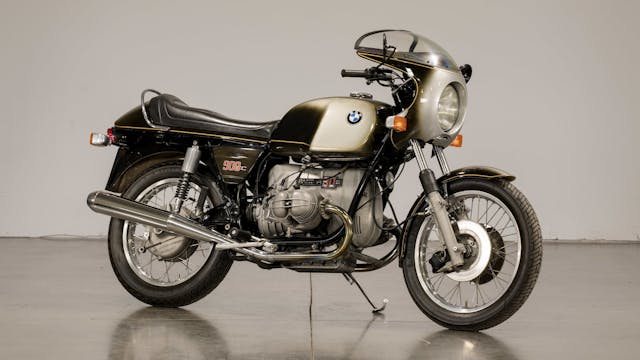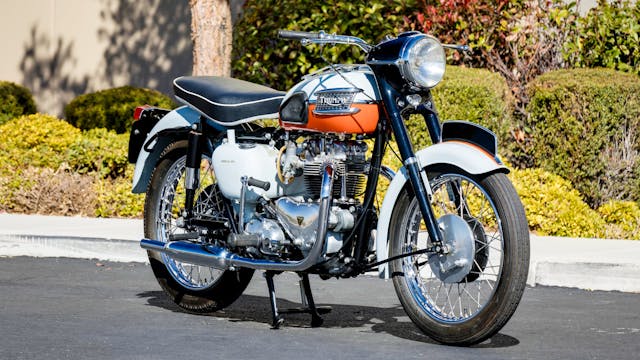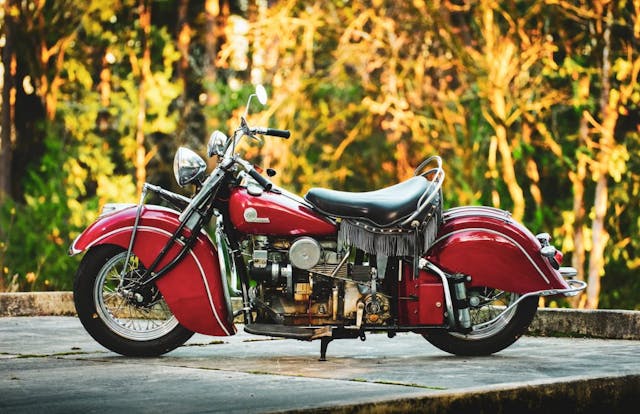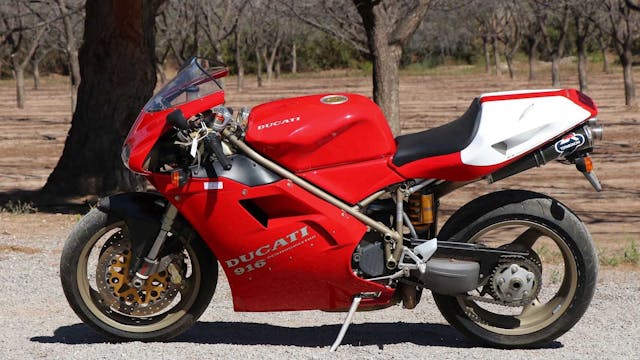5 trends that are shaking up the motorcycle market
Values for motorcycles, like those for cars (and myriad other kinds of collectibles), have enjoyed a wild ride upward during the pandemic. Yet two-wheeled classics exist in a market distinct from that for cars, impacted by different forces.
Good thing there’s a Hagerty Motorcycle Price Guide. It uses thousands of transactions to track values on 9751 motorcycles. Here are five trends that stood out to us in the most recent update, released in June.
The gap between the best and the rest is increasing

The smart take in the motorcycle community of late, much like for cars, is that a full-on, concours-level restoration rarely pays (at least financially speaking). The last 5 percent of work on a 100-point restoration often adds 50 percent to the cost, and the expertise required for the highest quality work is disappearing. The pandemic and ensuing inflation have only exacerbated those issues, with fixed costs such as labor and rent for shop space increasing and supply chain shortages hiking the price of parts.
Yet the very fact that restorations have become prohibitively expensive has, conversely, fed demand and higher values for bikes that have already been restored to top-notch standards. Buyers are increasingly paying above—sometimes shockingly above—what had been the norm for perfectly restored motorcycles rather than waiting and shelling out for a restoration.
In the June update of the Hagerty Motorcycle Price Guide, #1 condition motorcycles saw the biggest percent increase—a median of 10.1 percent. That’s the second largest book-over-book increase ever.
There are motorcycles that have far larger premiums than others, some of which might shock you.
Notable examples:
- The difference between a #1 and #2 BMW R90S is 67 percent or $13,300.
- The difference between a #1 and #2 1940 Indian Model 440 is 46 percent or $69,000. Up from a 29 percent difference last year
British bikes are fashionable again, and values are spiking for (some) historically more affordable models

British bikes have for several years caught the downside of the demographic changes sweeping through the bike market. Aging buyers increasingly sought out electric starts, while younger buyers simply couldn't understand why they would purchase a $10K Triumph Bonneville when they could get a CB750 for $2.5K. Well, the days of the $2.5K CB750 are gone—that bike has rocketed upward in value at a time when the Bonneville has stagnated or dropped.
Consider, for instance, one of the most desirable of the Bonnevilles, the 1959 Triumph T120R Bonneville. It was the motorcycle that got people excited about motorcycles in the same way the MGs and Triumph cars of the era awoke a generation of car enthusiasts to the joys of simple sports cars. As such, the Bonneville sits high in the pantheon of the most collectible British motorcycles.
Despite that, the past few years have not treated the model well. In 2007, Bonhams sold a 1959 Triumph T120R Bonneville for $28,080. In 2016, one at Mecum crept higher, selling for $30,800 after fees. This January at Mecum Las Vegas, two examples of that same model in similar restored condition slid downward, selling for $17,600 and $26,400.
Buyers might be more enticed by British bikes now that their values are equal with those of their Japanese counterparts. Indeed, when compiling the latest price guide, we saw evidence that everything from affordable Triumph Tridents to staple classics like the Norton Commando are growing in value again.
Notable examples:
- For every three Triumphs that increased in value only one decreased. Triumph’s three-cylinder Trident increased 45 percent, the most of any British bike.
- Norton commandos increased between 11 percent and 17 percent, the first overall increase in Commandos since 2015. The 750SS, 750S, and 750R got the largest increases of 17 percent.
- BSA A65 Spitfire Hornet increased 20 percent.
- The T120 Bonneville increased 2–6 percent. Not huge, but that's their first increase of any size since 2018.
Prewar Harley-Davidson and Indian motorcycles are double-dipping as collectible art

To some, myself included, motorcycles can be a form of art. And with values for tangible assets increasing due to inflationary pressure, "art" motorcycles such as prewar Harley-Davidsons and Indians faired very well in the last year, especially rare models. That should be welcome comfort to older enthusiasts who fear younger buyers won't want their bikes (although we think those fears are unfounded). The aforementioned increasing cost of restorations has only amplified the spike in value of the best examples.
- One of the most beautiful examples of mechanical art, the Indian four-cylinder, saw the largest gains of any American prewar bike. Values grew 44 percent for the Model 440, 30 percent for the Model 435, and 25 percent for the Model 403 year-over-year.
- The Harley-Davidson JD, one of the most popular prewar Harleys and the one that introduced the teardrop tank, increased 60+ percent.
Gen-Xers are reliving their youth on dirt bikes

"500cc two-stroke" resonates with street and dirt motorcycle riders. In street form, such machines are synonymous with GP bikes. In dirt form, they're synonymous with single-cylinder, arm-ripping torque. Whether you prefer street or dirt, chances are you're paying more for these '70s and '80s bikes than you would have ten years ago. A Honda CR500 was a used bike back then. Now it's a $15K collectible. Collectors, particularly the fiftysomethings who grew up in the era, seem to be untroubled by the heavy use of plastics that once turned off more traditional collectors.
Notable examples:
- 500cc two-stroke Maicos gained 50–70 percent.
- The 1978–1980 Honda CR250R increased 100 percent to a #1 value of $15,000.
Niche '80s and '90s sportbikes become more and more accepted as collectibles

We predicted back in our 2020 Bull Market that the Ducati 916 was headed for the big time. We were right. It went from a bike that appealed only to hardcore Ducati fans and weekend riders to a new staple in the collector market. At the time of our Bull Market story, they cost around $10K–$13K. Now the best ones hit $20K. We suspect they'll stay there for a bit—they increased only 4 percent this price guide. Yet the Ducati's ascendence seems to have blazed a trail for other niche sportbikes, as some are seeing large gains.
Notable examples:
- The Moto Guzzi 1000S had its second consecutive increase over 100 percent. It increased 109 percent this price guide to a value of nearly $28,000.
- The GSX-R 750P Limited Edition gained 120 percent after gaining 20 percent each of the previous two years.


